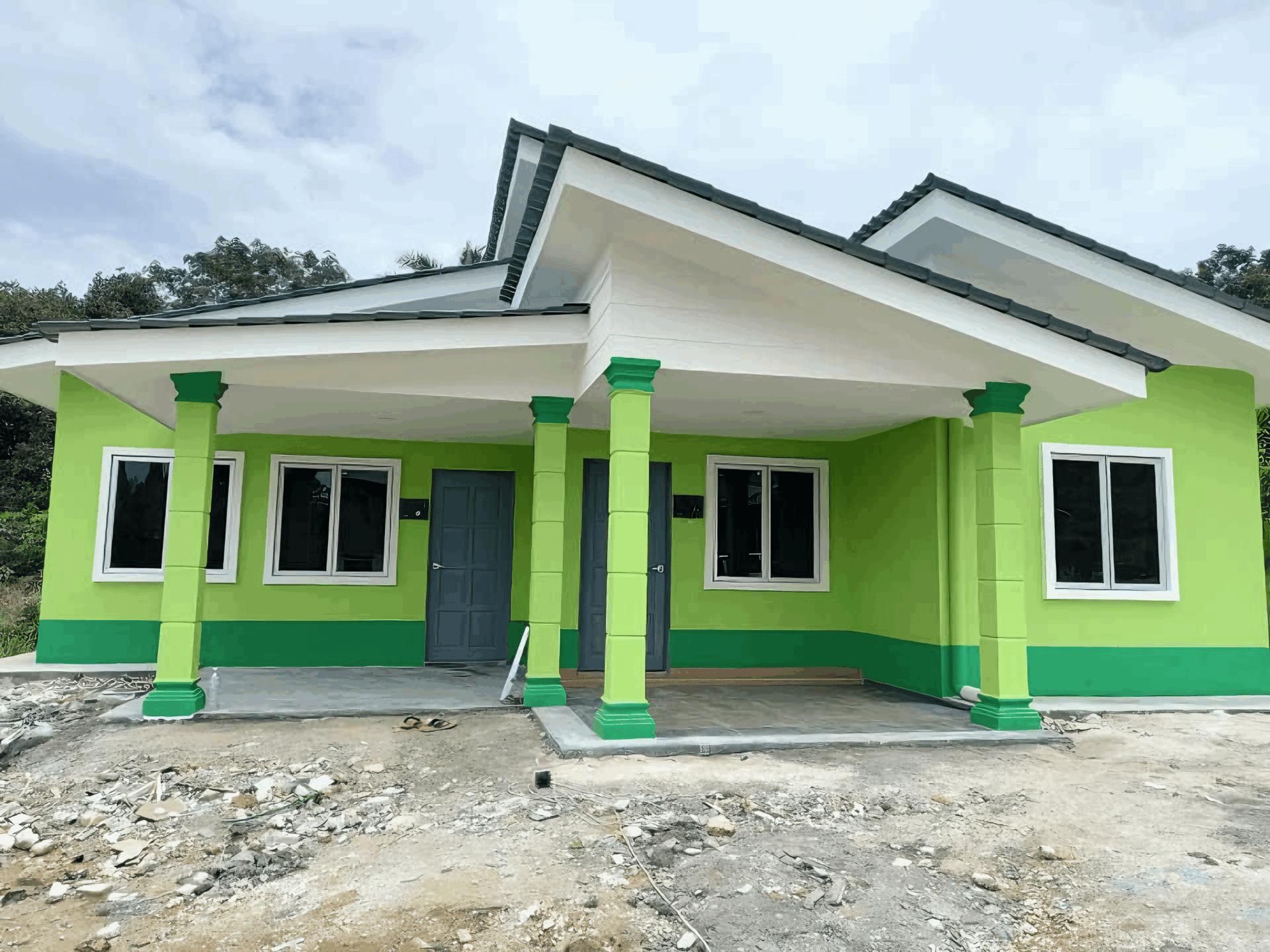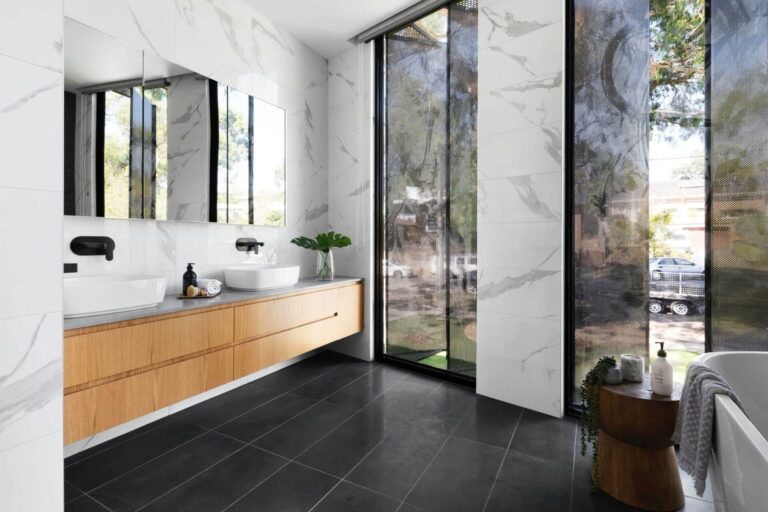Building your dream house is like piecing together a jigsaw puzzle – each element plays a crucial role, but there’s one ingredient that truly ties it all together: cement. Picture this: you’ve got your beautiful walls, perfectly designed rooms, and that inviting porch where you’ll sip your morning tea. But none of that would stand strong without the sturdy foundation that only cement can provide. In Malaysia, where our hot and humid climate can be a challenge for structures, the importance of cement becomes even clearer. Whether you’re going for a sleek modern design or a cozy traditional home, cement is the unsung hero that ensures everything stays in place. So, let’s dive into why this versatile material is truly the glue that holds your dream house together.
The Essential Role of Cement in Modern Construction
Cement has become a fundamental component in constructing the homes of our dreams, serving as the cornerstone of modern architecture and engineering. Its ability to bond materials together creates solid structures that withstand the test of time, making it a favorite among builders and homeowners alike. Whether it’s for foundations, walls, or decorative elements, cement’s versatility shines through, ensuring that every brick, beam, and block is securely held in place.
One of the remarkable properties of cement is its strength and durability. Unlike other materials, it hardens over time, providing an unyielding framework that enhances safety and longevity. When mixed with carefully selected aggregates and water, it forms concrete that can endure extreme weather conditions and heavy loads, making it an indispensable choice for Malaysian construction. Consider the following benefits:
- Energy Efficiency: Cement structures can help regulate temperature, reducing energy consumption.
- Fire Resistance: Its non-combustible nature protects your home from fire hazards.
- Acoustic Insulation: Cement provides excellent sound insulation, ensuring a peaceful indoor environment.
Moreover, the contribution of cement to sustainable building practices cannot be overlooked. Innovations in eco-friendly cement production are paving the way for greener construction, minimizing carbon footprints while maximizing strength and resilience. Here’s a quick look at traditional cement versus green alternatives:
| Cement Type | Environmental Impact | Usage |
|---|---|---|
| Traditional Cement | High Carbon Emissions | Essential for structural applications |
| Eco-Friendly Cement | Lower Carbon Footprint | Sustainable construction projects |
In essence, cement is more than just a binding agent; it is the very fabric of the structures we rely on. By understanding its critical role, we can make informed choices that not only shape our living spaces but also contribute positively to the environment and our communities.

Understanding the Chemistry Behind Cement Strength
Cement strength is primarily derived from the complex chemical reactions that occur during the hydration process. When water is mixed with cement, a series of reactions unfold, leading to the formation of new compounds. These compounds, predominantly calcium silicate hydrates (C-S-H), are what give concrete its formidable strength and durability. The more completely the cement hydrates, the stronger the final product becomes. This process can take time—often days to weeks—but it is essential for achieving the desired resilience needed for structures.
Several factors influence the final strength of cement, including the type of cement, water-cement ratio, and the curing method used. Here’s a quick rundown of these elements:
- Type of Cement: Different cement types, such as Portland and slag cement, have different compositions and properties.
- Water-Cement Ratio: A lower water-cement ratio results in higher strength; however, it can also make mixing and workability more challenging.
- Curing Method: Proper curing ensures moisture is retained, allowing ongoing hydration to strengthen the cement.
Understanding these factors can help you choose the right cement for your projects, ensuring your dream home stands the test of time. Consider a quick reference to some common cement types and their applications:
| Cement Type | Common Use |
|---|---|
| Ordinary Portland Cement | General construction |
| Rapid Hardening Cement | Projects requiring quick setting |
| White Cement | Aesthetic finishes |
| High Alumina Cement | Resistant to high temperatures |

Types of Cement and Their Unique Properties
Cement comes in various types, each tailored to specific construction needs and conditions. Among the most common is Ordinary Portland Cement (OPC), the go-to choice for most builders. It’s known for its excellent binding properties, making it ideal for a wide range of general construction projects. Plus, it’s readily available and economical, which adds to its popularity. Another contender is Blended Cement, which combines OPC with supplementary materials that boost strength and durability while reducing environmental impact. This makes it a smart choice for eco-conscious builders keen on sustainability.
Next up, we have Rapid Hardening Cement, designed for those times when you’re on a tight schedule. This type gains strength quickly, allowing for faster project completion, which can be a lifesaver in busy construction timelines. On the flip side, Sulphate-Resisting Cement is the champion in environments exposed to high sulphate levels, like coastal areas or near certain industrial sites. Its unique formulation makes it particularly resistant to deterioration, helping structures last longer in challenging conditions.
For specific applications, special cement types come into play as well. For instance, Hydrophobic Cement repels water, making it a solid option for projects where moisture is a concern, like basements or outdoor structures. Meanwhile, High Alumina Cement is known for its extraordinary resistance to heat, which is particularly beneficial in fire-prone areas. Here’s a quick overview of these cement types along with their properties in the table below:
| Cement Type | Unique Property |
|---|---|
| Ordinary Portland Cement (OPC) | General construction |
| Blended Cement | Eco-friendly, enhanced durability |
| Rapid Hardening Cement | Quick strength gain |
| Sulphate-Resisting Cement | Durability in sulphate-rich environments |
| Hydrophobic Cement | Water repellence |
| High Alumina Cement | Heat resistance |
Sustainable Cement Options for Eco-Friendly Homes
When thinking about building a home that’s not only beautiful but also eco-friendly, cement options are becoming increasingly sophisticated. Traditional Portland cement is notorious for its high carbon footprint, so eco-conscious builders are turning to alternative choices. Some popular sustainable cement options include:
- Fly Ash Cement: This is made from the byproduct of coal combustion and can replace a portion of Portland cement, leading to reduced emissions and material waste.
- Geopolymer Cement: Using industrial waste materials like slag or fly ash, this option generates far fewer greenhouse gases during production.
- Made with Recycled Materials: Some innovative mixes incorporate recycled glass or plastic, making your cement not only more sustainable but also helping to reduce landfill waste.
For homeowners looking to create energy-efficient spaces, another exciting sustainable option is pervious concrete, which is designed for stormwater management. This allows rainwater to seep through the surface and reduces runoff, contributing to water conservation and reducing the burden on drainage systems. Moreover, with the rise in hybrid cement, combining various natural and recycled materials, builders can customize the strength and durability needed for specific applications while keeping sustainability in mind.
| Cement Type | Benefits | Environmental Impact |
|---|---|---|
| Fly Ash Cement | Utilizes byproducts, reduces waste | Lower carbon emissions |
| Geopolymer Cement | High durability, cost-effective | Minimal greenhouse gas emissions |
| Pervious Concrete | Water management, reduced flooding | Promotes water conservation |

The Impact of Cement on Energy Efficiency in Buildings
Cement plays a crucial role in enhancing the overall energy efficiency of buildings. When used in construction, it contributes to thermal mass, allowing buildings to effectively regulate indoor temperatures. This means that during hot days, concrete structures can absorb heat, keeping the interiors cooler, while in cooler months, they release warmth, leading to less reliance on heating and cooling systems. Consequently, this stability in temperature can significantly lower energy consumption, reducing utility bills and encouraging a greener lifestyle.
Moreover, the quality of cement affects not just the strength and durability of the building, but also its energy performance. By employing high-performance cements, builders can create more insulated walls, thus minimizing air leaks and improving overall energy efficiency. Some of the benefits include:
- Improved insulation properties
- Longer lifespan of the structure
- Lower carbon footprint due to reduced energy usage
In addition to traditional uses, new innovations in cement technology are paving the way for even greater energy efficiency. For example, self-healing cements and those incorporating recycled materials help to reduce the environmental impact of construction while enhancing the overall effectiveness of buildings. Consider the following table that showcases different types of advanced cements and their benefits:
| Type of Cement | Energy Efficiency Benefit |
|---|---|
| Recycled Cement | Reduces waste; lowers emissions during production |
| Self-Healing Cement | Increases lifespan; reduces maintenance needs |
| High-Performance Cement | Enhances insulation; minimizes energy loss |
Innovative Uses of Cement in Interior Design
Cement is often thought of as a construction material strictly for the exterior of buildings, but its versatility actually extends into interior design in some pretty exciting ways. Imagine using polished concrete flooring as a sleek backdrop for your living space. This not only adds a modern touch but is also durable and low maintenance. Combine it with some vibrant rugs to create warmth and personality, transforming what could be a cold surface into a cozy atmosphere.
Then, there’s decorative cement wall treatments that can elevate any room. Consider using textured cement panels to create a feature wall that draws the eye. With various styles, from raw and rustic to smooth and contemporary, these panels can act as a statement piece without overwhelming your decor. To add a touch of elegance, pair these walls with minimalist furnishings or lush greenery for a perfect balance.
Moreover, cement can be mixed with resin to fabricate unique pieces, such as tables, lamp bases, and even sinks. This blend not only results in stunning designs but also provides a blend of functionality and artistry. Check out how cement accessories can add an unexpected twist to your home decor:
| Item | Function | Design Element |
|---|---|---|
| Cement Planters | Hold indoor plants | Adds texture and contrast |
| Cement Candle Holders | Holds candles | Creates a cozy ambiance |
| Concrete Shelves | Store items | Stylish and sturdy |

Maintenance Tips for Cement-Based Structures
To keep your cement-based structures in tip-top shape, regular maintenance is key. From your home’s foundation to decorative elements, staying on top of repairs can prolong their life. Here are a few essential tips to ensure your cement structures stand tall and proud:
- Inspect Regularly: Take a stroll around your property every few months to catch early signs of wear and tear. Look out for cracks, discoloration, or flaking.
- Seal Cracks Promptly: If you find any cracks, don’t wait! Use a suitable sealant to fill them. This helps prevent water infiltration and further damage.
- Keep It Clean: Regularly remove dirt, algae, or debris from surfaces. High-pressure washing can be effective but be careful not to remove any protective coatings.
It’s also important to consider the environment your structure is in. Factors like humidity and rain can significantly affect cement-based materials. Make adaptations to mitigate these effects:
| Environmental Factor | Maintenance Action |
|---|---|
| High Humidity | Apply moisture-resistant sealants. |
| Heavy Rain | Ensure proper drainage systems are in place. |
| Extreme Heat | Use reflective coatings to minimize thermal expansion. |
Lastly, don’t forget the beauty factor! Enhancing the aesthetic appeal of your cement structures can be as important as their functionality. Consider these tips to keep things visually striking:
- Paint and Coatings: A fresh coat of paint or decorative coating can work wonders, giving your cement surfaces a brand-new vibe.
- Landscaping: Incorporate plants and other landscape elements to soften the look of hard concrete surfaces.
- Lighting: Use outdoor lighting to accentuate your structures during the night, adding charm and safety.

Future Trends in Cement Technology and Home Building
The landscape of home building is on the brink of transformation with innovative cement technologies leading the charge. One of the most exciting trends is the rise of eco-friendly cement alternatives, which minimize environmental impact without compromising on strength. These new formulations not only reduce carbon footprints but also enhance resistance to weathering, ensuring that your dream house withstands the test of time. Imagine living in a home constructed with materials that are as kind to the earth as they are durable!
Another trend gaining momentum is the integration of smart technology with traditional building practices. Cement can now be embedded with sensors that monitor the structural integrity of your home, alerting homeowners to potential issues before they escalate. This creates a safety net for your investment, ensuring that your dream abode remains as secure as it is beautiful. Moreover, the idea of self-healing concrete is becoming a reality, utilizing unique properties to repair small cracks autonomously—now that’s the kind of technology that would leave any homeowner feeling at ease.
Lastly, we can’t ignore the significance of 3D printing in cement technology. As this method becomes more refined, it opens doors to creating custom-designed houses with complex shapes and reduced material waste. Builders can streamline the construction process, significantly reducing time and labor costs. This not only makes home ownership more accessible but also encourages unique architectural designs that were previously unattainable, allowing individuals to express their personal style in ways that blend seamlessly with modern aesthetics.
Closing Remarks
As we wrap up our exploration of why cement is the ultimate unsung hero in building your dream house, let’s take a moment to appreciate its pivotal role. Think of cement as the backbone of your humble abode, quietly doing the heavy lifting while the rest of us get lost in tile choices and paint swatches. Without this sturdy mix, your vision could crumble—literally!
So, next time you step into your newly built home, take a moment to marvel at the solid foundation beneath you. It’s not just a bunch of bricks and mortar; it’s a testament to what truly makes a house a home. Whether you’re dreaming of that cozy family hub or an inviting space for friends, remember that cement plays a key role in making those dreams a reality.
Here’s to strong walls, sturdy memories, and homes that withstand the test of time—cheers to you and your dreams, all held together by that trusty cement! Happy building! 🏡✨







